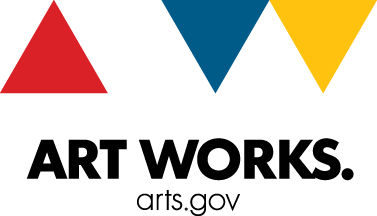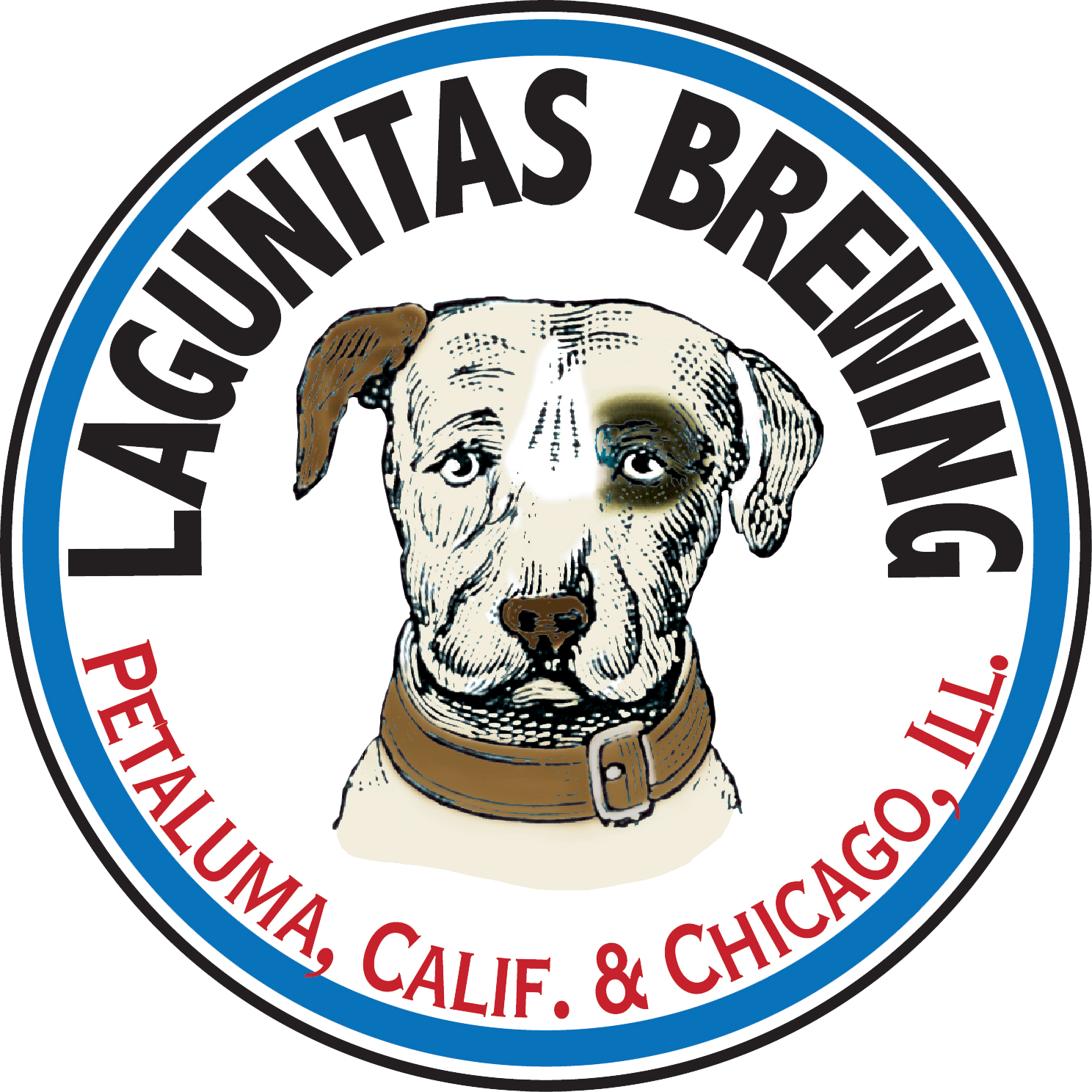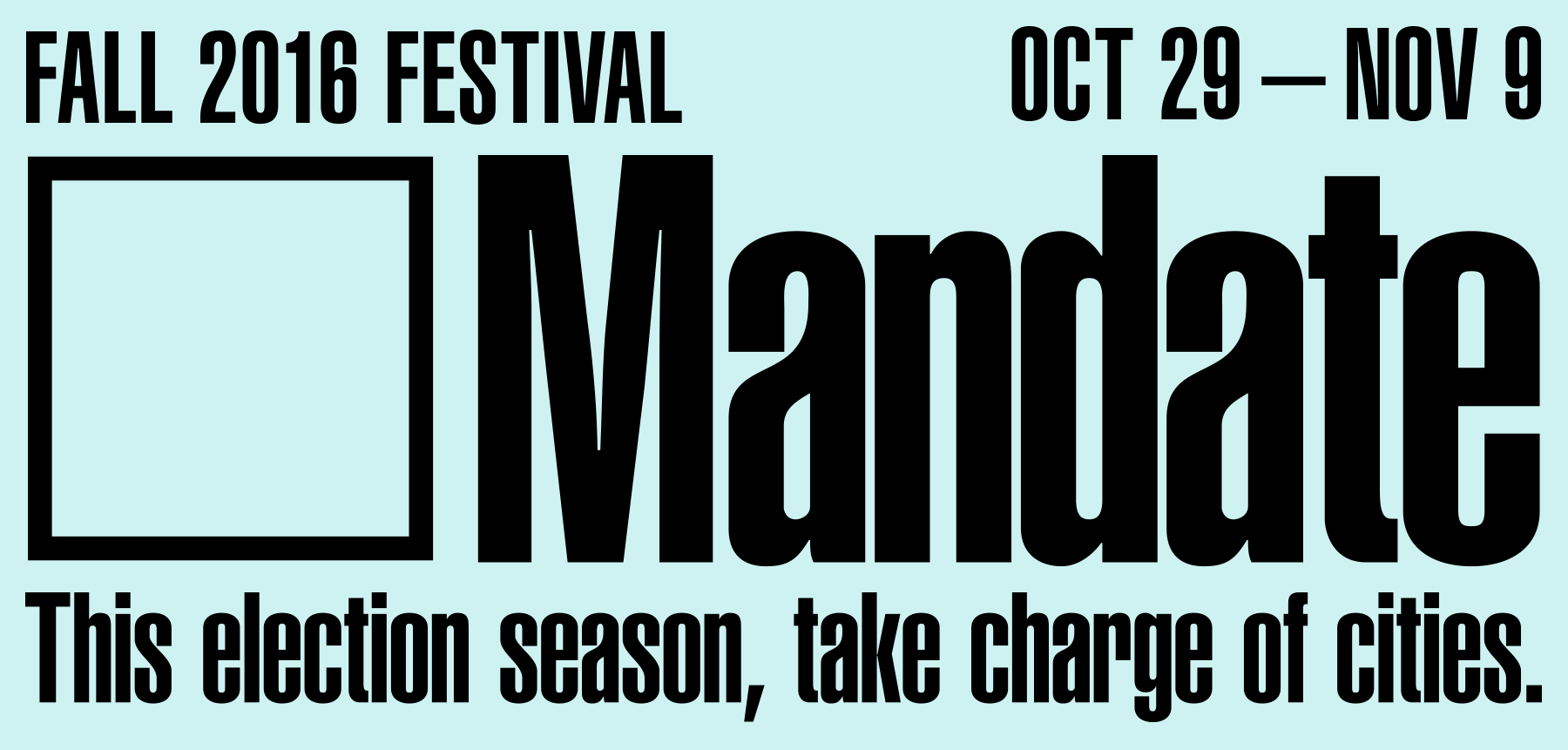
In fall 2016, as the nation mounted a game-changing election, we explored how political mandates and public participation shape the urban landscape. We gained a better understanding of cities by asking questions like: What is the mandate of elected officials on the neighborhood, borough, city, regional, state, and federal level? How does a national election impact local issues like infrastructure and social policy? How do the decisions of politicians impact the physical form of cities and inhabitants’ wellbeing? And how can designers and everyday people mandate from below, and influence the policies impacting the built environment through official and unofficial means?
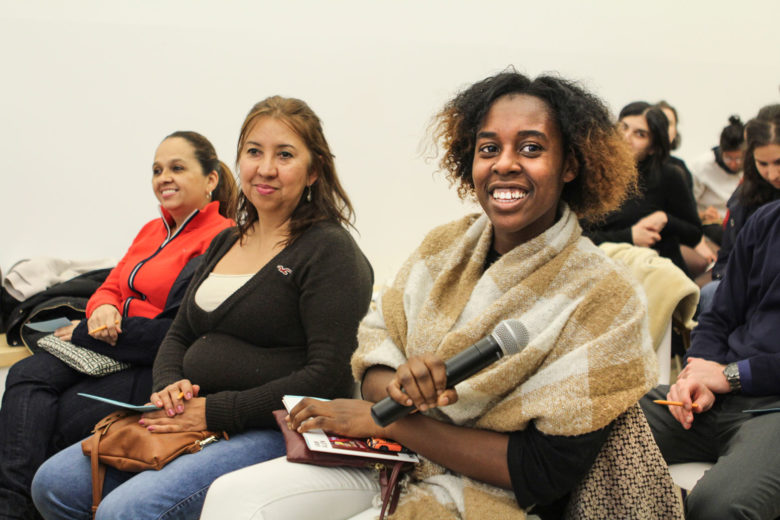
OPEN POLL
Saturday, Oct. 29, 4 PM
Flash Competition
Presented with Archtober
Van Alen Institute
30 West 22nd Street
How can design address the perceived problems of the voting poll experience in urban communities, from long lines at obscure locations to bungled technology and counting conundrums? This fast-paced, one-day design competition invited interdisciplinary teams to consider how the voting poll experience in cities could be re-imagined to be more equitable, accessible, and engaging for all citizens.
Following a closed-door workshop among finalist teams, attendees joined us for a presentation of team proposals and voted for their favorite. A jury of design and election experts judged the entries and announced a winner at the conclusion of the event.
This event was designated for AIA CES (3 LU | HSW)
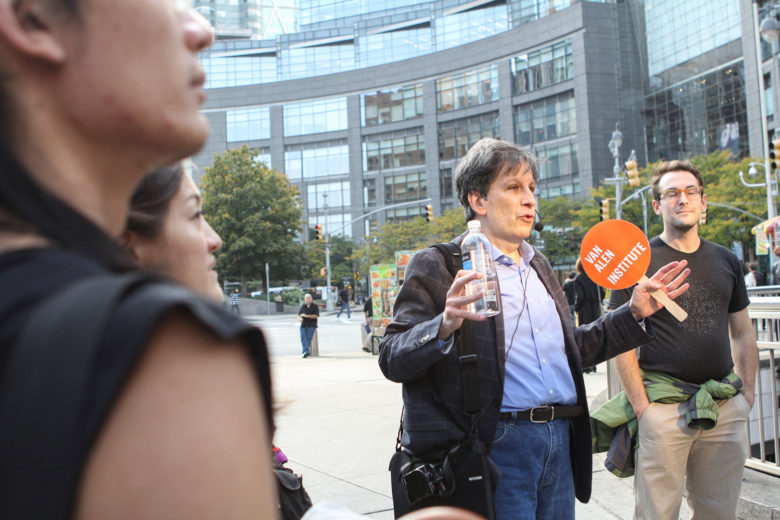
MIDTOWN MANDATE
Sunday, Oct. 30, 3 PM
Walking Tour
Trump International Hotel & Tower
1 Central Park West
Manhattan
Before he was a presidential candidate, Donald Trump transformed the skyline of New York City as he navigated zoning laws and mayoral administrations. Architectural historian, Emmy-nominated humorist, and author of TRUMPitecture: The Architecture of Donald TRUMP Barry Goldsmith led a non-dogmatic tour of Trump’s impact on Midtown Manhattan, and discussed how real estate investment informs the experience of the city with or without policymakers and voters.
This event was designated for AIA CES (2 LU)

IN THE LAND BANK: BORROWING, BANKRUPTCY, & BAILOUTS
Tuesday, Nov. 1, 7 PM
Fast-Paced Presentations and Discussion
Presented with the Lincoln Institute of Land Policy
Van Alen Institute
30 West 22nd Street
Who holds the strings to the public purse that pays for crucial services and ultimately determines a city’s financial survival? From grassroots land grabs and infrastructure collapse, to Community Development Block Grant programs, we pinpointed the state and federal policies and land-use loopholes that have major implications for municipal money. With an eye toward the post-industrial electoral convention host cities—Cleveland and Philadelphia—and sites of fiscal failures such as Flint, Michigan and San Juan, Puerto Rico, we filled in the blank between ballots and budgeting, and asked: Which cities are the winners and losers in the election process?
Participants: Michael Cohen, professor of international affairs, Milano School of International Affairs, Management and Urban Policy, The New School; Anthony Flint, fellow & director of public affairs, Lincoln Institute of Land Policy (moderator); Isabel Luciano, program associate, Participatory Budgeting Project; Andrew Salkin, Senior Vice President, City Solutions, 100 Resilient Cities, Rockefeller Foundation; and Paul T. Williams Jr., counsel, Arent Fox LLP, former CEO of DASNY
This event was designated for AIA CES (2 LU | HSW) and ASLA CES PDH/HSW (2 LU)
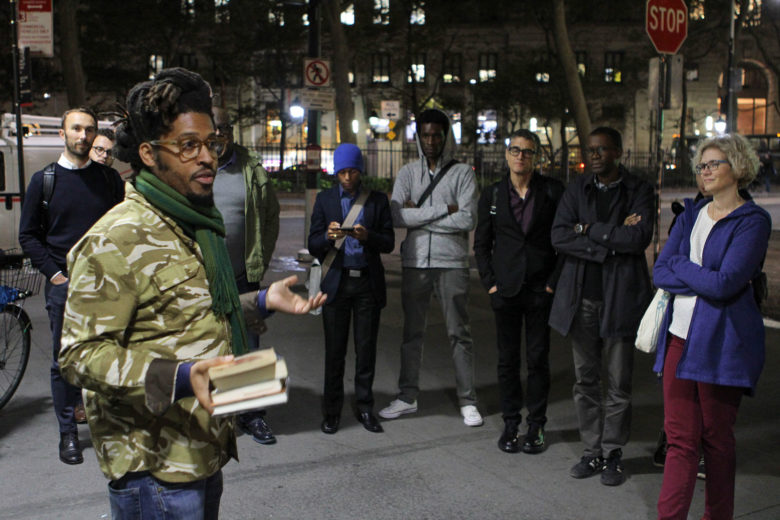
LOWER MANHATTAN MANDATE: BLACK GOTHAM
Wednesday, Nov. 2, 7 PM
Walking Tour
Alexander Hamilton U.S. Custom House
1 Bowling Green
Manhattan
We journeyed to New York City’s early history—the colonial mandate by British governors—as Black Gotham founder Kamau Ware guided participants on an evening tour of how the historic actions of policymakers controlled the lives of the first black New Yorkers. We discovered the laws, conspiracies, and rebellions that influenced the expanding colony along lines of slavery, class, and politics, and continue to inform the experience of today’s city.
This event was designated for AIA CES (2 LU)

STRANGE BEDFELLOWS: REAL ESTATE, THE ARTS, AND THE VALUE OF SPACE
Thursday, Nov. 3, 7 PM
Fast-Paced Presentations and Discussion
Van Alen Institute
30 West 22nd Street
As government funding for the arts vacillates with the ping-pong of dual-party politics, and as periodic recessions strip many wealthy donors of their giving capacity, the precarity of the creative community has become the norm. Participants joined us for a discussion to devise new ways to fortify the arts through New York City’s one true constant: the ever-rising value of space. We asked such questions as: How can urban prosperity ensure stability for a diverse arts culture? How can the architects and planners who navigate between these disparate worlds of art and real estate propose fresh or even radical models? And what influence do governmental subsidies have on these realms?
Participants: Dunia Dupont, chief operating officer, New Lab; Kevin Davey, principal, Urban Art Projects; Kevin Dolan, founder, National Sawdust; Peter Zuspan, co-founder, Kokowa and principal, Bureau V
This event was designated for AIA CES (1.5 LU)
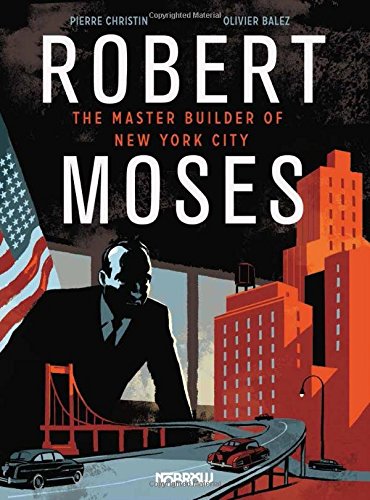
VAN ALEN BOOK CLUB | ROBERT MOSES: THE MASTER BUILDER OF NEW YORK CITY
Sunday, Nov. 6, 7 PM
Discussion
Van Alen Institute
30 West 22nd Street
Lionized and loathed, Robert Moses’ complex legacy is one that we live with every day, and it retold as a graphic novel by Pierre Christin and Oliver Balez. We discussed of how Moses’ decades-long mandate allowed him to negotiate all levels of local, state, and federal control to reshape New York City through parkways, public housing, and more. We explored questions including: How does the format of a graphic novel engage readers in this topic? What histories are revealed or concealed? In the comic book world of 20th-century New York, who are the real villains and heroes?

PERSON PLACE THING: ALICIA GLEN
Monday, Nov. 7, 6:30 PM
Live Radio Show
Van Alen Institute
30 West 22nd Street
As deputy mayor for housing and economic development, native New Yorker Alicia Glen’s mandate includes more than 40 agencies and authorities. From empowering women entrepreneurs and preserving public housing to introducing a citywide ferry service, Glen has brought her frank and forthright approach to solving urban problems.
Participants joined us for a conversation between Glen and former “Ethicist” columnist for The New York Times Randy Cohen in a live recording of the radio show Person Place Thing. Glen told us about a person, a place, and a thing that have shaped her understanding of cities, and how that understanding has in turn shaped her work. The evening also featured performances by banjoist Hubby Jenkins.
This event was designated for AIA CES (1.5 LU | HSW)
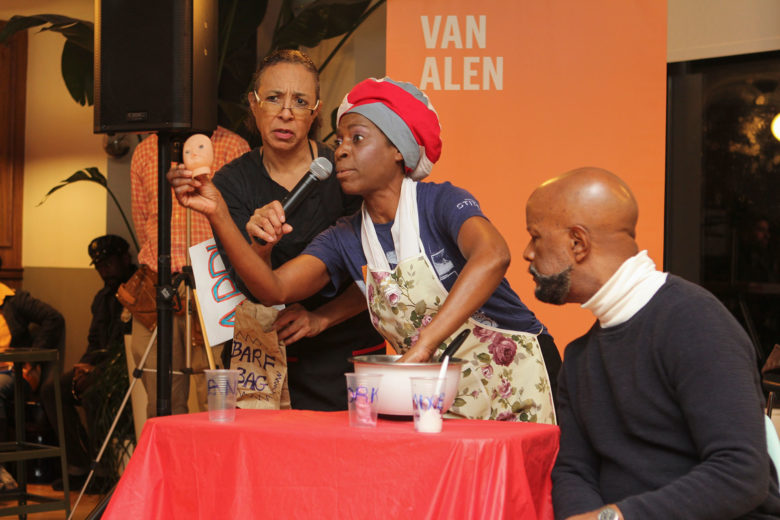
VAN ALEN VARIETY SHOW
Wednesday, Nov. 9, 7 PM
Presented with WeWork
WeWork FiDi
85 Broad Street
What will the aftermath of the 2016 election mean for cities? Participants joined us for a post-Election Day reflection of the mandate of everyday city dwellers to improve one another’s lives. Following the November 8 election results, we applied performance, satire, and rapid presentations to mix policy and play and proclaimed the power of participation:
- Concrete Justice and Theatre of the Oppressed presented “Homestead Instead: Reclaiming the Dream,” an interactive play that addressed issues of homelessness, gentrification, and homesteading, based on the real-life experiences of the actors
- Protest Karaoke with artists Angel Nevarez and Valerie Tevere: We chose from thousands of popular titles in the artists’ hand-bound karaoke songbooks and decontextualized pop into politics
- Everything you’ve always wanted to know about Community Boards but were afraid to ask: Van Alen Director of Strategic Initiatives Anne Guiney discussed finding a sense of home in the maze of subcommittees, long meetings, and strong personalities of city politics at its most local
- “Connecting Initiatives” explored international models for how elected leaders can better connect with citizens and communities through alternative initiatives, with Yazmany Arboleda (Nairobi: “Color in Faith”), New York-based artist; Hanif Yazdi (New York City: “NYC ID”), urban planner, Office of the Mayor; Kouki Mojadidi (Kabul: “Women Centers”), architect; Discussion Convener: Francisco Brown; (Kabul: “Border Protection”), design professional and ARQUINE Magazine correspondent
This event was designated for AIA CES (1.5 LU)
5 ACTIONS TO CLAIM YOUR MANDATE
Following our fall festival and the simultaneous national election, we explored the challenges and opportunities discussed in our public program series to create a set of “5 Actions to Claim Your Mandate.” Below is our illustrated guide for citizens to have an impact in their communities and make cities more equitable, inclusive, and livable for everyone.
Remember: A surprising number of decisions are made at the local level constantly, and you have a voice in shaping them.
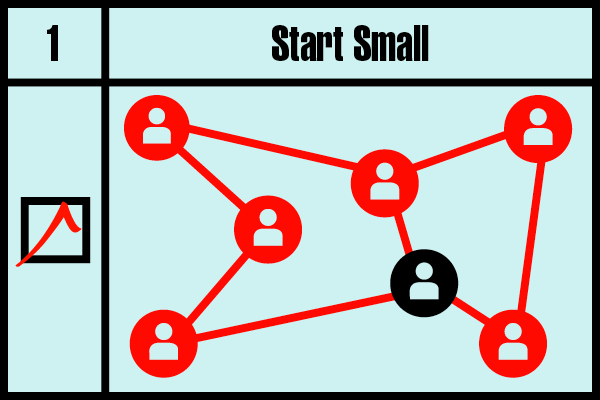
1. Start small.
Participation doesn’t have to start with picking the president. Pull up a seat at the next meeting of your block association, building tenants union, community board, and congressional district town hall. You may find that starting small is the best way to advocate for change you can actually see in your everyday life. Next, team up with local likeminded stakeholders and make a statement. See our recent letter to Mayor Bill de Blasio advocating for protecting and expanding public spaces of assembly, which included the signatures of a dozen other local organizations. Identifying a handful of friends in your congressional district is also a good start to launching a small action group.
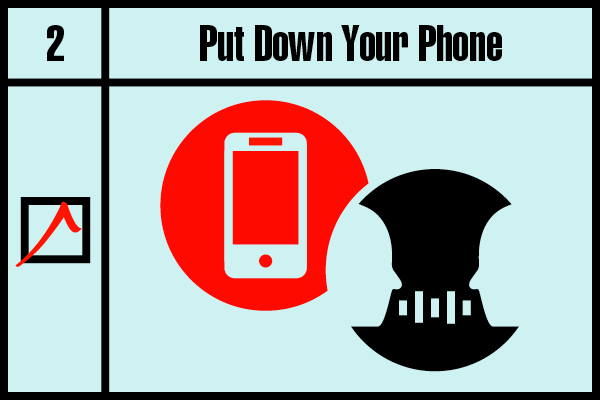
2. Put down your phone.
Posting a political rant and “liking” a candidate’s profile isn’t exactly the cornerstone of public participation. Knocking on doors, attending sit-ins, and daring to engage in healthy face-to-face debate in public are what make the democratic city vibrant. Locate your local representatives, and after you call and email, actually go to his or her office and request an in-person meeting. Go public if you get pushback.

3. Get real about real estate.
It’s no secret that the machinations of real estate development hold incredible sway on what goes up and what goes down in our cities. Demand that elected leaders and their appointees disclose property holdings, release information about transactions, divest where there are conflicts of interest. Only by putting in the effort to unravel the opaque deals, tax rebates, and zoning exemptions can we empower ourselves to advocate for community interests — and anticipate, rather than react to, the role of real estate interests to make the city more inclusive for all.
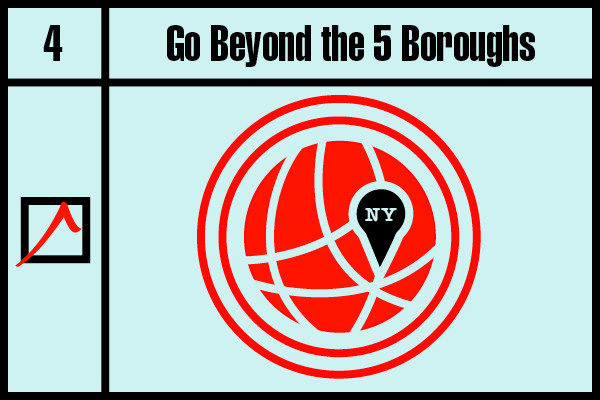
4. Go beyond the 5 Boroughs.
How are the capitals of developing countries dealing with the issues facing your street corner? Or what can local politicians learn from the problem solving of reviving post-industrial cities? No matter how much hometown pride you have, your city isn’t the capital of the universe, and studying the cases of other cities at different scales can reveal powerful lessons for tackling your own municipality’s concerns.

5. Don’t wait for Election Day.
Decisions that shape our cities are made daily at City Hall, in corporate boardrooms, and the church basements that host community board meetings — so waiting for the next Oval Office occupant to take over isn’t the way to go if you want to advocate for your city and community. There’s something going on today that you can get involved in. Your city’s official website offers a litany of opportunities to take action. Prepare for action, and you’ll be ready to mobilize the moment your cause becomes a flashpoint.
ABOUT
Mandate was part of the multiyear initiative, Understanding Cities, which aims to improve our understanding of cities via different lenses, from design and policy to activism and visual and performing arts. Through talks, debates, and excursions, we tackle compelling questions about the nature of cities from the perspective of varying disciplines.
SUPPORTERS
This series was made possible through our Program Leadership Council, co-chaired by Andy Bernheimer (Bernheimer Architecture), Katherine Chia (Desai Chia Architecture), Koray Duman (Buro Koray Duman), Mark Gardner (Jaklitsch / Gardner Architects), Sara Grant (Murphy Burnham and Buttrick Architects), Stephan Jaklitsch (Jaklitsch / Gardner Architects), Amy Lau (Amy Lau Design), and Joel Sanders (Joel Sanders Architect).
Thank you to council members Elliot Berkowitz, Matthew Bremer, Jerry Caldari, Demetrios Comodromos, Powell Draper, Dunia Dupont, Kevin Erickson, Lisa Frazar, Chris Hughes, Scott Hughes, Julie Iovine, Hauke Jungjohann, Andrew Kotchen, Drew Lang, Gareth Mahon, Michael Manfredi, Philippe Meyersohn, Matthew Moss, Ted Porter, Juergen Riehm, Jane Stageberg, Carol Swedlow, Michael Szivos, Marion Weiss, and Stephen Yablon.
The programs are supported by the New York State Council on the Arts with the support of Governor Andrew M. Cuomo and the New York State Legislature, and, in part, by public funds from the New York City Department of Cultural Affairs in partnership with the City Council.
